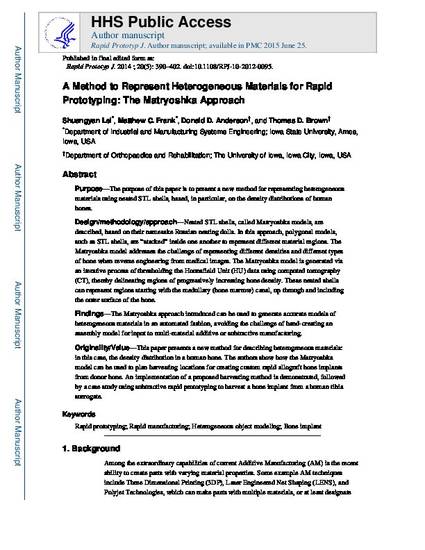
Purpose—The purpose of this paper is to present a new method for representing heterogeneous materials using nested STL shells, based, in particular, on the density distributions of human bones.
Design/methodology/approach—Nested STL shells, called Matryoshka models, are described, based on their namesake Russian nesting dolls. In this approach, polygonal models, such as STL shells, are “stacked” inside one another to represent different material regions. The Matryoshka model addresses the challenge of representing different densities and different types of bone when reverse engineering from medical images. The Matryoshka model is generated via an iterative process of thresholding the Hounsfield Unit (HU) data using computed tomography (CT), thereby delineating regions of progressively increasing bone density. These nested shells can represent regions starting with the medullary (bone marrow) canal, up through and including the outer surface of the bone.
Findings—The Matryoshka approach introduced can be used to generate accurate models of heterogeneous materials in an automated fashion, avoiding the challenge of hand-creating an assembly model for input to multi-material additive or subtractive manufacturing.
Originality/Value—This paper presents a new method for describing heterogeneous materials: in this case, the density distribution in a human bone. The authors show how the Matryoshka model can be used to plan harvesting locations for creating custom rapid allograft bone implants from donor bone. An implementation of a proposed harvesting method is demonstrated, followed by a case study using subtractive rapid prototyping to harvest a bone implant from a human tibia surrogate.
Available at: http://works.bepress.com/matthew_frank/9/

This is a manuscript of an article from Rapid Prototyping Journal 20 (2014): 390, doi:10.1108/RPJ-10-2012-0095. Posted with permission.